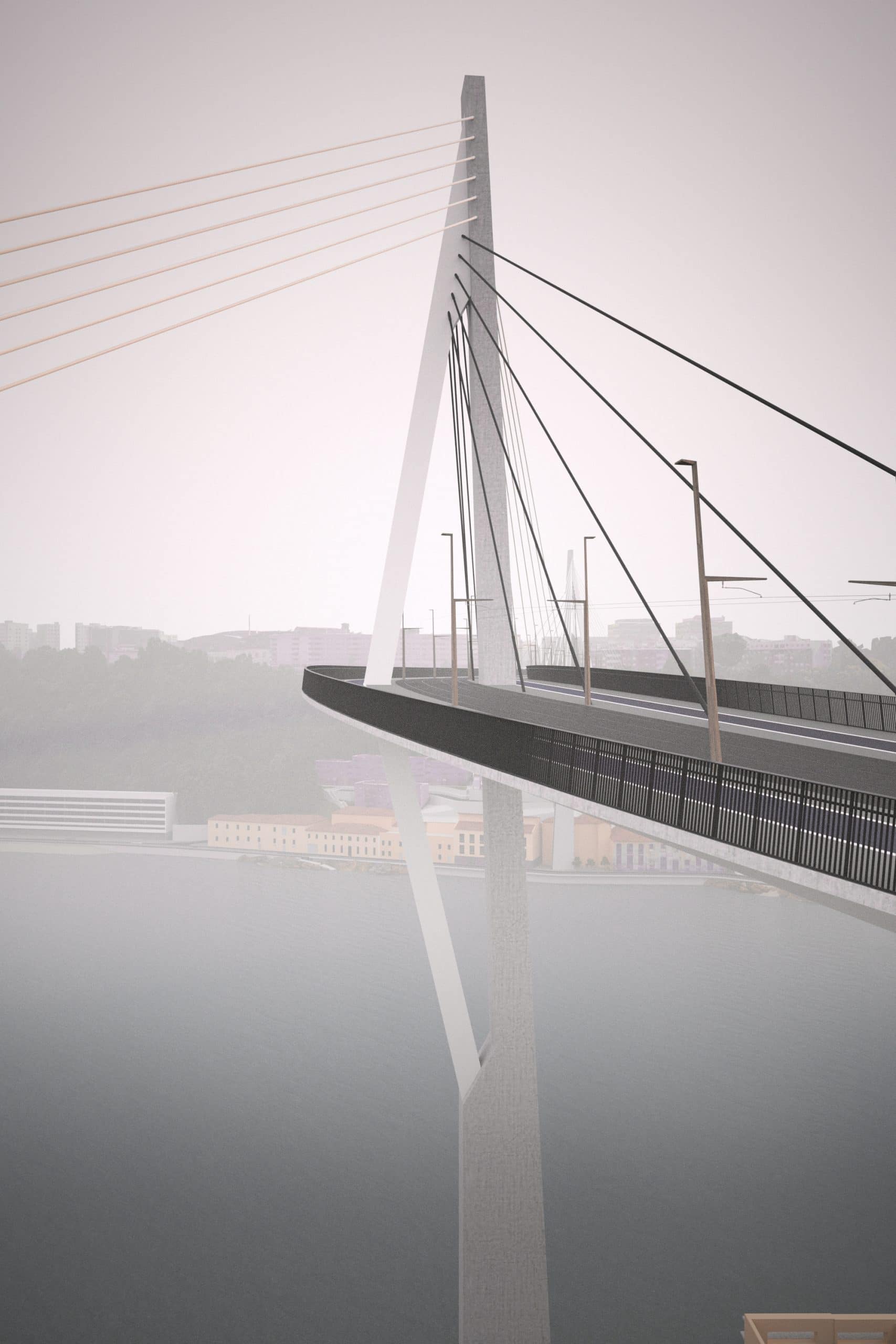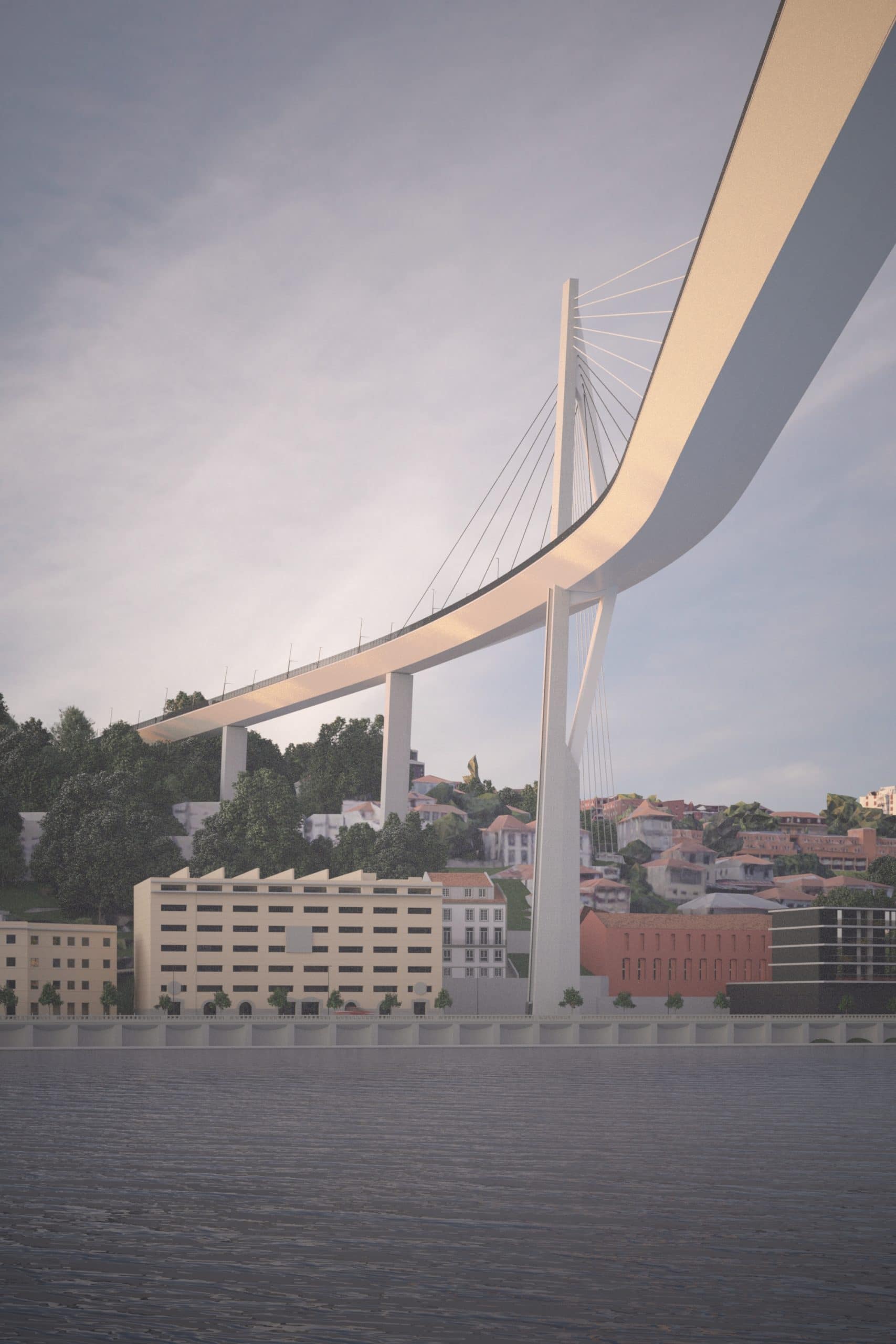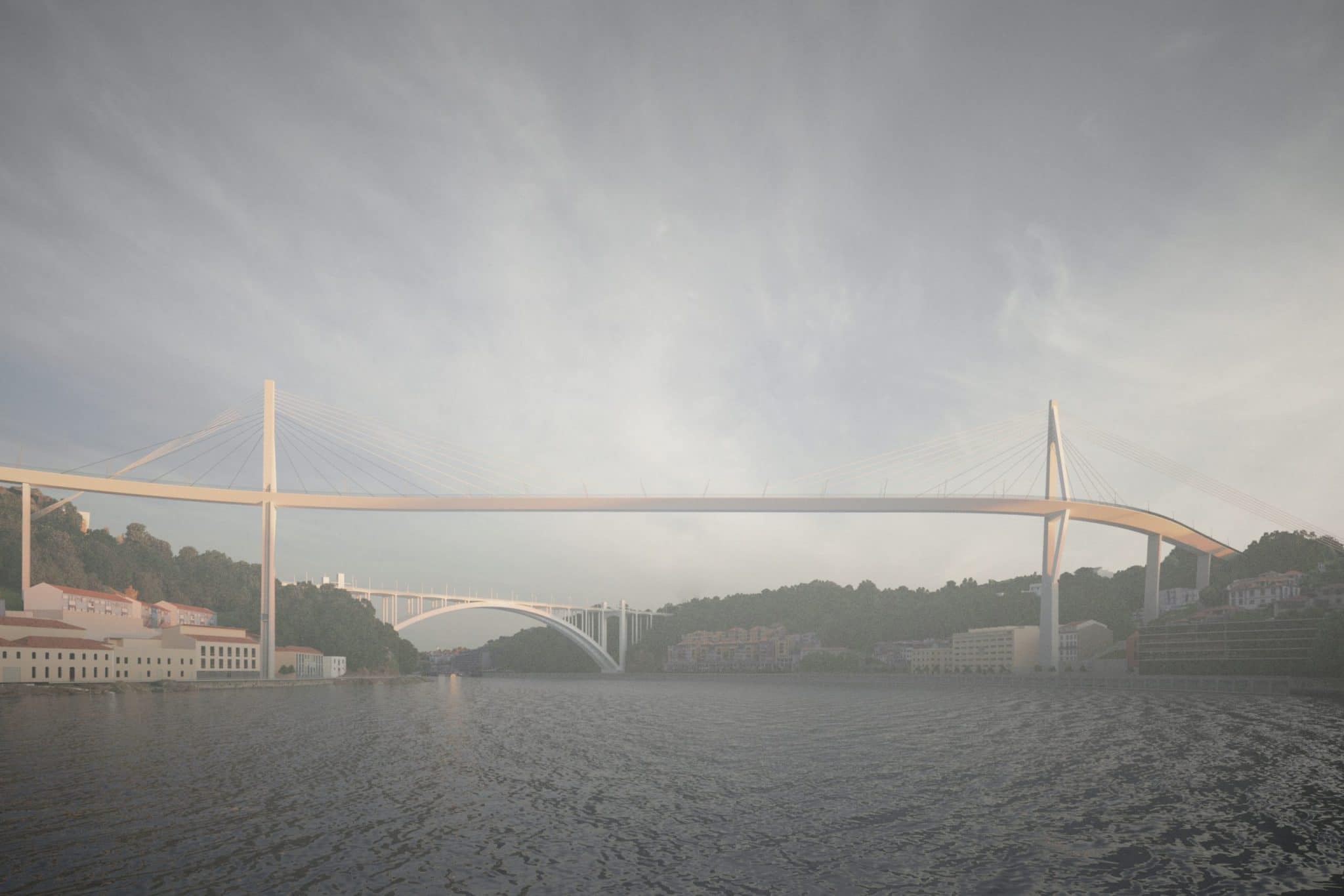
© 2020 Cake Industries. All rights reserved.
Ponte Nova, Porto
Cake Engineering collaborated Holicska Architects on a competition proposal for the New Metro Bridge in Porto, Portugal. The bridge will provide a new connection for a proposed new Metro line between the townships of Porto and Gaia as well as pedestrian and cycle routes connecting the two sides.
Located on a spectacular site, this bridge is in the presence of masterpieces of bridge architecture that span three centuries. These heritage bridges capture the prevailing constraints and technologies of their time. This excellence is reflected in the New Metro Bridge, which is cognizant of its place in history.
In our submission we set out to evaluate this major infrastructure project prioritising sustainability among the usual considerations of similar projects. Instead of having sustainability as one of the criteria – or worse even as an afterthought – we evaluated every decision in the design process in terms of reducing the life cycle carbon emissions of the design first and everything else after.
During our practice we often encountered the opinion that we will need infrastructure and it is too important to compromise on sustainability goals. In our opinion this approach – the equivalent of shrugging our shoulders and pointing at others to clean up the mess – is going to lead to further inaction. It is easy to see how this argument can be applied to a number of the most polluting industries.
The submission recognises that priorities are changing. It sets out to identify and optimise a design that reflects these priorities and address them using practical modern construction techniques.
An elegant cable-stayed solution is proposed that makes efficient use of materials and complements the collection of bridges that grace this stretch of the Douro.
It features an alternative alignment that minimises the main span length and hence the necessary material
for the span. A lightweight steel deck with a minimal concrete running surface minimises the weight carried
by the cable arrangement and therefore the sizes of the mast and foundations.
Material use has been a key project driver, and cable stayed technology allows a lightweight structure that is also simple to construct and visually attractive within the context of the Douro. In addition, material specifications will be carefully considered to maximise the use of recycled materials and cement replacements, with an overall aim to significantly reduce the embodied carbon dioxide emissions.
The inescapable pressures of the climate crisis mean that many of the design choices we have grown accustomed to making can no longer be justified. The options that remain are driven by economy of material
use and, consequently, the essence of elegant design is preserved.
Collaborators
Adam Holicska (Holicska Architects)











